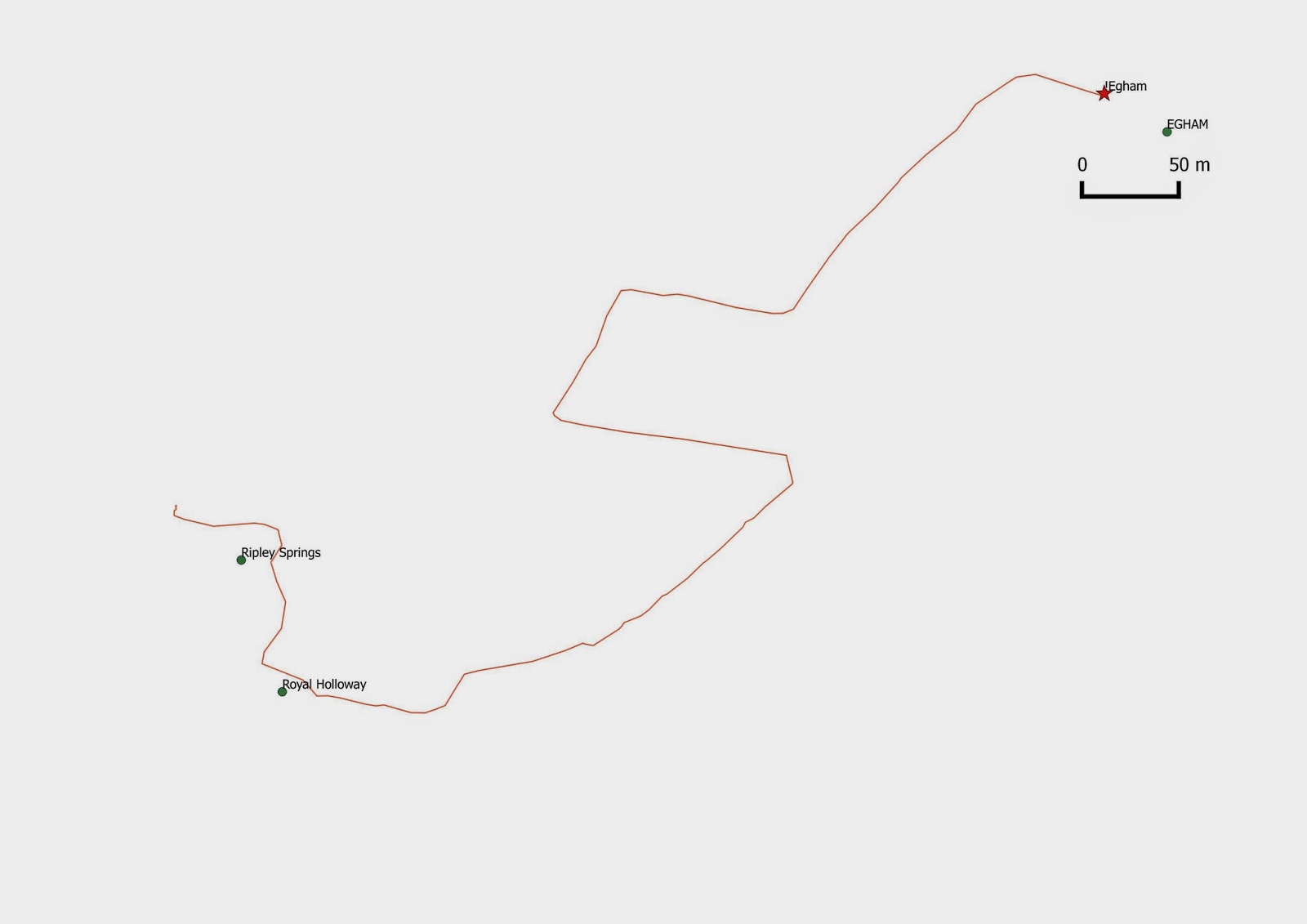Map made using QGIS 2.2
On the way, I glanced just past both Ripley Springs and Royal Holloway points (to be re-visited later: both points sit on top specific buildings on campus).
Going down to Egham with my kit (GPS, camera, notepad) I didn't know what to expect: what would the essence of Egham look like? See below:
It turns out 'Egham' (according to OS data) resides at the intersection of The Crescent and Spring Avenue. (Or at least within 50 metres of the intersection, in someone's backyard!)



